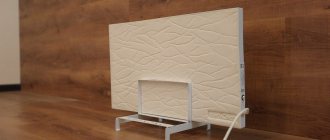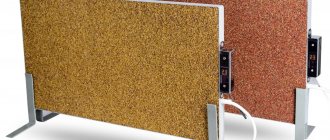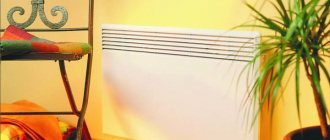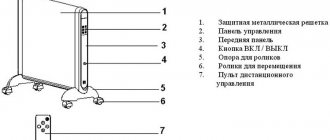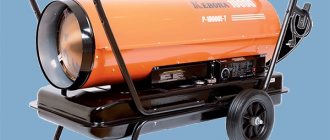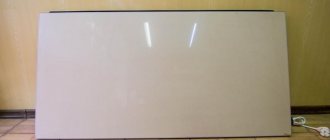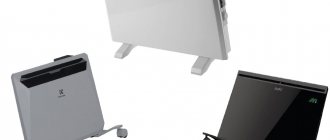What is ultraviolet?
Ultraviolet, or UV, radiation occupies the spectral range between visible and x-rays from 100 to 400 nm. Ultraviolet was discovered after the discovery of infrared radiation with shorter wavelengths, lying at the opposite end of the spectrum. The main source of ultraviolet radiation is the sun.
Depending on the wavelength, there are three ranges of ultraviolet radiation:
- UV-A (315-400 nm);
- UV-B (280-315 nm);
- UV-C (100-280 nm).
UV-C and 90% of UV-B rays are absorbed by ozone, water vapor, oxygen, and carbon dioxide. Only 90% of UV-B and UV-A rays penetrate the atmosphere.
How do you get ultraviolet light?
There is a galaxy of ultraviolet lamps. Special glass is used; standard silicone glass is not permeable. This is far from the only and certainly not the most promising method of producing ultraviolet radiation:
- Gas discharge lamps. When the ionization process begins, mercury's electron energy levels are arranged in such a way that the disintegration of molecules causes the appearance of ultraviolet quanta.
- The excilamp does not differ from the previous class except for the pronounced maximum of radiation located in the near ultraviolet range, for example, 282 nm. The active substances are xenon bromide. Most noble gas halides are used. The principle of operation is based on discharge and production of plasma that actively emits ultraviolet radiation. The scheme for creating ionization is different.
- Luminescence is a secondary process. The active substance is bombarded with electrons and begins to glow in the process. The phenomenon is based on changes in the energy states of electrons. The shade of the glow depends on the composition of the phosphor; it is reasonable to select the components, trying to obtain the ultraviolet range.
- LEDs are considered a promising direction. The efficiency reaches 99%, in addition, the width of the emitted ultraviolet spectrum can be chosen as small or large as desired. Small size, fault tolerance and relatively simple processing methods will allow the formation of ultraviolet radiation sources of any type. The principle of operation is based on the processes occurring in the pn junction. The frequency of radiation is determined by the composition of energy states in the semiconductor.
- Lasers are a separate topic; they are not used in everyday life. The main feature is the coherence of radiation. The ultraviolet spectrum is narrow, the waves are of the same phase. For heating purposes, no tricks are needed, nor is there any need to kill microbes. Such precise parameters of the ultraviolet radiation source are used in technology, and less often in medicine.
Difference between UV and IR rays
Both rays are part of the solar spectrum, and belong to its invisible part. However, this is where the similarities between them end.
Almost half of solar radiation is infrared radiation. They are characterized by the fact that they are a source of strong thermal energy, which is emitted by all bodies heated by them, including the human body.
Ultraviolet light not only heats, but also has a photochemical effect. It is absorbed by nucleic acids, which leads to a change in the vital activity of cells - the ability to grow and divide.
The benefits of ultraviolet light
UV towel heater
Ultraviolet rays destroy certain types of pathogenic bacteria, viruses, and some fungi on different surfaces, in water and air. At the same time, UV radiation does not affect the habitat of these microorganisms.
Expert opinion
Grebnev Vadim Savelievich
Heating system installer
Infectious disease specialists warn that it is not always possible to achieve complete disinfection through UV radiation alone.
Other beneficial properties of ultraviolet radiation also include activation of the body’s production of vitamin D, which is critical for bone tissue. Radiation of this part of the light spectrum is necessary for the prevention of depressive conditions in people.
In addition, ultraviolet light, when used correctly:
- reduces blood viscosity;
- enhances microcirculation;
- strengthens the walls of blood vessels;
- reduces pain;
- improves the conductivity of nerve impulses, etc.
The opportunities that radiation provides are used to treat acute inflammatory skin diseases, purulent inflammations, etc. In such cases, ultraviolet irradiation (UVR) is prescribed.
This technology is also the basis for the operation of solariums, where you can get an artificial tan. Radiation is also used in dentistry to harden dental fillings.
Ultraviolet light is also used in other areas:
- mineral analysis;
- spectrometry;
- catching insects;
- restoration;
- chromatographic analysis;
- printing.
UV radiation in moderate doses is necessary for vegetation. But the flora dies from its excess.
Overview of the features of the ultraviolet towel warmer
An ultraviolet heater for the home can also be represented as a towel heater. It is an integral part of spas. With the help of such a device, hygiene procedures can be ensured at the highest level. As a result, it is possible to obtain sterile warm towels.
These heaters provide bactericidal treatment of fabric, as well as plastic, glass and other products such as sponges, brushes, combs, etc. It is very convenient to use such heaters when there is a need to treat devices that cannot be exposed to chemical solutions and high temperatures. Such heaters combine the functions of ultraviolet sterilization and heating of objects.
Harm from ultraviolet radiation
Radiation can negatively affect the condition of various objects made of polymers. Under its influence, various surfaces become dull, crack, and can be destroyed - this phenomenon is called UV aging. The longer objects are exposed to ultraviolet radiation, the sooner their properties are lost.
Susceptible to UV radiation:
- polypropylene;
- polyethylene;
- polymethyl methacrylate, or organic glass;
- aramid fibers, including Kevlar.
To prevent materials from deteriorating, substances are added to the raw materials that make the products resistant to such effects.
Ultraviolet radiation also has a detrimental effect on human health:
- when the skin's natural protective ability to tan is exceeded, burns occur;
- mutant cells are formed, resulting in the development of melanoma;
- intense radiation leads to radiation damage to the cornea (electroophthalmia).
Expert opinion
Grebnev Vadim Savelievich
Heating system installer
To protect the body from ultraviolet radiation, creams, eye lenses and glasses with UV filters are produced.
Is there ultraviolet heating?
The answer is clear - no, unlike infrared. But ultraviolet light still found application in everyday life.
"Blue" lamp
The device is also called the Minin reflector, named after the Russian military doctor who first used ultraviolet light to treat patients.
Lamps are still used today for the complex treatment of various diseases of the skin, nasopharynx, ear, etc. - for ARVI, otitis, sinusitis, etc. For treatment, the lamp is directed to the problem area. The rays increase the temperature of tissues and destroy pathogenic microflora. After a course of procedures, pain decreases and inflammation decreases.
Until the early 40s of the last century, a Minin lamp was in almost every home. Such popularity of the physiotherapeutic method was explained by the absence or shortage of necessary medications. But after antibiotics and sulfonamides became widely used, the popularity of the device began to decline.
Shoe dryer
Ultraviolet shoe dryers are gradually becoming as common a gadget as blue lamps once were.
They are lasts that are inserted into shoes. They contain a heating element powered by electricity and a UV lamp.
Manufacturers claim that in addition to drying wet shoes, such devices disinfect the lining and insole, destroying all types of fungi, and eliminating unpleasant odors.
Towel warmers
Ultraviolet towel heaters are installed mainly in modern spa salons. They allow you to disinfect textiles used for compresses, rubbing, pedicures, etc.
Recently, smart gadgets have appeared on sale. They have built-in sensors that react to a person and turn off the ultraviolet light if the distance between him and the device is reduced to 2.5 m.
Similar equipment with an ultraviolet disinfection function is used for other accessories that come into contact with skin, hair, nails - brushes, sponges, combs, etc., which cannot be disinfected with chemicals and high temperatures.
UV sterilizer for aquarium
The device is installed in aquariums to purify water from harmful organisms. An ultraviolet sterilizer is a small cylinder on the surface of which there are two tubes - inlet and outlet. Through the first, water enters the cylinder and is exposed to UV irradiation; through the second, it exits purified. Such sterilizers are effective only in fresh water and only in small aquariums.
UV lamps for mosquitoes
Ultraviolet light is also used in the fight against mosquitoes, since this range of the spectrum attracts insects. When mosquitoes fly up to the device, they land on the grille that surrounds the housing. An electric current is connected to it, destroying insects.
Ultraviolet devices are a useful gadget in the home when it comes to disinfection and treatment. But you cannot use them as a heater for heating rooms, since it can harm your health.
Physics of IR heating
The sun is a source of electromagnetic radiation, which is divided into three parts by wavelength:
- Visible light (using the usual prism, it can be split into seven colors - from violet to red).
- Waves that are shorter are not visible to our eyes and are located beyond the violet region of the spectrum. That's why they are called ultraviolet waves. The Earth's atmosphere absorbs them well. And the human body’s protective reaction to the harmful effects of ultraviolet radiation is darkening of the skin (in other words, tanning).
- Long waves are also invisible and are located beyond the red region of the spectrum (hence the name - infrared or thermal radiation). The human body perceives such waves as ordinary heat.
Spectrum of electromagnetic waves in visual representation
Infrared heaters actually emit the long-wave thermal component of the solar spectrum (in other words, heat rays ). These rays heat not the air, but the walls, floors, and objects, which in turn release the resulting heat to the surrounding atmosphere. This heating method brings with it a lot of positive properties, but more on that later.
Heating principle (IR heater on the left, object on the right)
According to scientists, in an apartment or private house it is most effective to use infrared heating, the wavelength of which varies from 5.6 to 15 microns. Why? It's very simple: the human body's own thermal radiation has exactly the same frequency! Moreover, this is the kind of radiation that a baby receives in the first 9 months of his life. As you already understand, this is a huge plus for health.
For your information! Based on these discoveries, scientists from Japan, back in the 60s, created a certain design, which then began to be used in infrared sauna cabins. And many years of research conducted in the world's leading clinics have proven the undeniable benefits of procedures in infrared cabins (treatment of colds, obesity, cellulite, stimulation of the stomach).
Infrared sauna cabin
Types of infrared heaters
First of all, IR heating is divided into two types:
- Lighting devices - their emitter surface temperature is more than 600°C, so they are most often used for heating large areas.
- Long-wave devices - their emitter surface temperature is much lower. They are usually used for heating small spaces.
In addition, all IR heaters are divided into three types according to the type of energy from which they operate:
- Electrical appliances (in most cases used for heating apartments and private houses). They can be wall-mounted, floor-mounted heaters, in the form of floor or ceiling film, and even picture panels. By the way, infrared paintings are an excellent additional heating and decorative decoration. They can be of any theme: space, fantasy, retro, oriental, fresco, and so on.
Electrical IR device
Electric wall
Film floor
Infrared painting heater
- Gas and liquid appliances (usually installed in industrial premises with high ceilings). Infrared heating systems for industrial use are wide panels mounted to the ceiling or wall.
Gas appliance
Liquid fuel infrared device
Control of infrared heating system
Infrared heating is controlled using thermostats and programming devices that continuously monitor the air temperature in the room and, if necessary, turn off or turn on groups of heaters. All this can be easily customized by you personally, based on your needs. Would you like a warm living room? Set the thermostat to the desired temperature - you and your guests will not freeze even in the most severe frost.
IR Heater Thermostat
Or maybe you don’t want heat to be wasted in rarely used rooms? Set your infrared ceiling heating system to economical mode and save your family budget!
Note! A temperature change of just 1°C results in an increase or decrease in energy consumption of approximately 5-6%. What follows from this? Rational management of such a heating system can provide up to 40% energy savings, and therefore money savings.
The ability to regulate the temperature is, in fact, quite wide: for example, you can go away for the weekend, having previously set the thermostat to 5°C, and in some rooms turn off the heating altogether. As a result, the apartment (house) will not freeze, and energy consumption is negligible. In addition, you can set the heating mode for a day or even a week. For example, while you are not in the house, the system will operate in the most economical mode, and when you arrive, it will organize the necessary thermal comfort.
Controlling infrared heating does not require any special skills or abilities. With a slight turn of the handle, you can set the most comfortable temperature for you in the range from 5 to 30°C. Well, the system itself will do the rest! So, perhaps, you won’t even need any instructions.
Scope of use
Hanging industrial IR heaters
As mentioned above, for infrared heaters, air is not a heat carrier, due to which it provides optimal temperature balance in the room. IR units transfer heat directly to nearby objects and people. This means that the temperature in the room can be maintained below normal, since infrared devices will in any case heat where it is really needed (that is, in places where people are). Energy savings are obvious.
IR heating hospital
Where can infrared heating be used? It is very convenient and efficient for heating:
- Apartments/private houses/dachas;
- Offices/hospitals/kindergartens/schools;
- Cafes (in particular street cafes)/bars/gyms;
- Garages/greenhouses/outdoor terraces/smoking areas;
- Industrial buildings/workshops/warehouses/hangars/workshops;
- Livestock premises;
- Trade pavilions.
Infrared ceiling heaters in cafes
When considering infrared heating, a parallel can be drawn with rays of light. By correctly distributing light sources in a room, the end result can be comfortable, uniform lighting. Infrared devices are distributed according to the same principle. Having first calculated the total power required to heat the room as a whole, you can then determine the power of the heaters required to distribute heat evenly.
Heating greenhouses using infrared film
Attention! When calculating an infrared heating system, you need to take into account the type of room, the total required power and ceiling height.
Advantages of IR heating
- The main distinguishing feature and also the main advantage is heating using a flow of radiant energy from the thermal spectrum. As you already know, the flow of radiant energy coming from infrared heaters, without heating the air, is transferred to the floor surface, objects and people. Then, the heat is transferred to the surrounding air by convection. This heating method, unlike traditional heating systems, allows us to achieve the most complete state of comfort for the human body.
- Did you know that all air heating systems (radiators, boilers, fan heaters) overheat the upper part of the room, while leaving the lower part quite cold? It should be noted that it is necessary for a person to keep his feet warm and his head cool. Infrared heaters (especially the “warm floor” system) satisfy these requirements. You can see how this happens in the photo below.
Heating difference
- The price of heat supplied by centralized sources, thermal power plants, and large boiler houses varies from 90 to 300 (or even more) rubles per 1 Gcal (it all depends on external problems). The cost of 1 kW/hour of electricity is 40-50 kopecks, which makes this energy for IR heating at worst 2 times more expensive, at best comparable, and at best economical.
However, do not forget about the possibility of precise temperature control! The system can easily, without human intervention, switch from operating to standby heating mode and back. In addition, it is possible to use a cheap night tariff for electricity - at night the heaters accumulate heat (accumulate), and during the day they release it evenly throughout the day. And this is additional savings, and not bad ones at that!
- One cannot fail to note such a positive side as the absence of the need to lay expensive gas pipelines, pipelines, radiators and other equipment. Installation of the IR system is carried out without much disruption to the usual life and interior of the room, as well as increasing, decreasing its power or dismantling it.
Installation sequence of infrared ceiling film
- The infrared heating system immediately comes into action when turned on. Plus, it can be turned off as much as you like, and it still won’t be subject to freezing and thawing.
- Compared to the hefty costs of maintaining and repairing air heating systems, this will only require periodic inspection of the contact groups.
- IR heaters can be used both as additional or emergency heating, and as the main heating for any premises.
- High fire safety, harmlessness to health and the environment, absence of odors and any harmful emissions - all these are also huge advantages.
- Infrared heaters do not burn oxygen. We think you don’t need to explain that this is very useful for all living things.
- Quiet operation.
- Installing infrared heating on the ceiling allows you to leave the walls and floor free without wasting the “useful” area of the room. Thus, quite a wide scope opens up for the implementation of design ideas.
- The heating elements installed in the heaters have a long service life, which guarantees the durability of the entire system.


